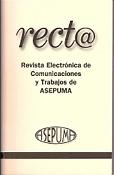Un método híbrido para resolver el problema de control óptimo de semáforos
Keywords:
Control óptimo de semáforos, quasi-Newton, recocido simuladoAbstract
Let us consider an intersection of two two-way streets. We want to solve the problem of finding the switch times of the corresponding traffic lights minimizing a certain criterion, such as the length of the queues, the number of vehicles at the worst queue, waiting time, a combination, etc. The resulting model is an optimization problem with equilibrium constraints, namely a linear complementarity constraints problem. In this work we propose a hybrid solution strategy where an approximation to the solution is computed by means of a simulated annealing algorithm and then it is improved by a quasi-Newton method for non-smooth optimization problems. We will also present some numerical examples.
Downloads
Publication Facts
Reviewer profiles N/A
Author statements
Indexed in
-
—
- Academic society
- N/A
- Publisher
- UMA Editorial. Universidad de Málaga
Downloads
Published
How to Cite
Issue
Section
License

This work is licensed under a Creative Commons Attribution-NonCommercial 4.0 International License.





